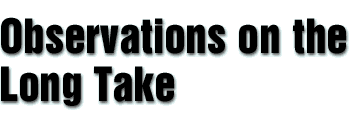|
 |
||
|
Pier Paolo Pasolini's reflection on the significance of death and editing |
Let us consider the short sixteen-millimeter film of Kennedy's death. Shot by a spectator in the crowd, it is a long take, the most typical long take conceivable.
The spectator-cameraman did not, in fact, choose his camera angle; he simply filmed from where he happened to be, framing what he, not the lens, saw.'
Hence, the typical long take is subjective.
In this, the only possible film of Kennedy's death, there are no other points of view: there is not one of Kennedy himself, or of Jacqueline, of the assassin shooting or his accomplices either, of those with a better vantage point, or of the police escorts, etc.
Were we in possession of footage shot from all those angles, what would we have? A series of long takes that would reproduce the actions of that moment simultaneously from various perspectives, as they appeared, that is, to a series of subjectivities. Subjectivity is thus the maximum conceivable boundary of any audiovisual technique. It is impossible to perceive reality as it unfolds if not from a single perspective, and this perspective is always that of a perceiving subject. This subject is always human, because even if, in a fiction film, we choose an ideal and therefore abstract and non-naturalistic point of view, it becomes realistic and ultimately naturalistic the minute we place a camera and tape recorder there: the result will be seen and heard by a flesh-and-blood subject (that is, one with eyes and ears).
Reality seen and heard as it happens is always in the present tense.
The long take, the schematic and primordial element of cinema, is therefore in the present tense. Cinema, consequently, "reproduces the present." Live television is a typical reproduction of something happening in the present.
Let us suppose, then, that we have not only one short film of Kennedy's death, but a dozen films of the sort, as many long takes as subjectively reproduce the present of the President's death. That very moment in which we, even if for purely documentary reasons, (for example, during a screening for police investigation) see all these subjective long takes in sequence, that is, we splice them, even if not materially, what do we have? A type of editing, even if an extremely elementary one. And what do we achieve with this editing? A multiplication of 'presents' as if an action, instead of unfolding once before our very eyes, unfolded many a time. This multiplication of 'presents', in effect, annuls the present, empties it: each present postulating the relativity of all others, their unreliability, imprecision, and ambiguity.
Observing it from the perspective of a police investigation (and the police are least concerned with aesthetics and strongly interested in the documentary value of the short film projected as eye-witness testimony to an event that must be precisely reconstructed) the first question to emerge is: which of these films best represents the facts? There are so many unreliable eyes and ears (or cameras and tape recorders) which record an irreversible event, one which appears different to each of these natural organs or technical instruments (shot, counter-shot, establishing shot, medium shot, close-up, and all other possible camera positions). Each of these presentations of reality is extremely impoverished, uncertain, almost pitiful, if one realizes that it is only one among many...
Pier Paolo Pasolini, 1967
Translated by Maria La Falce
This essay originally published in Empirismo Eretico, Garzanti, 1972.
Photos courtesy: ANSA, BFI, Associazione Fondo P. P. Pasolini
Full article published in Filmwaves - Issue 9, Autumn 1999. Subscribe now!

